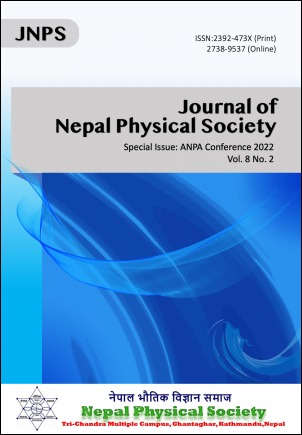Effect of Successive Heat Treatment on the Performance of Superconducting Radio Frequency Niobium Cavities
DOI:
https://doi.org/10.3126/jnphyssoc.v8i2.50152Keywords:
SRF cavities, High Q0, Flux expulsion and trappingAbstract
One of the primary sources of radio frequency residual losses leading to lower quality factor is trapped residual magnetic field during the cooldown of superconducting radio frequency cavities. It has been reported that non-uniform recrystallization of niobium cavities after the post fabrication heat treatment leads to higher flux trapping during the cooldown, and hence the lower quality factor. Here, we fabricated two 1.3 GHz single cell cavities from high purity fine grain niobium and processed with successive heat treatments in the range 800-1000 °C to measure the flux expulsion and flux trapping sensitivity. The result indicates that although flux expulsion improves with increased heat treatments, there is a noticeable difference between the flux trapping sensitivity depending on the cavity. Evaluation of microstructure maybe crucial to understand the impact of flux trapping sensitivity on cavity performance.
Downloads
Downloads
Published
How to Cite
Issue
Section
License
All right reserved. No part of this Journal may be reproduced in any form or by any electronic or mechanical means, including information storage and retrieval system, without permission in writing from the publisher, except by a reviewer who may quote brief passage in a review. The views and interpretation in this journal are those of author(s) and they are not attributable to the NPS.




